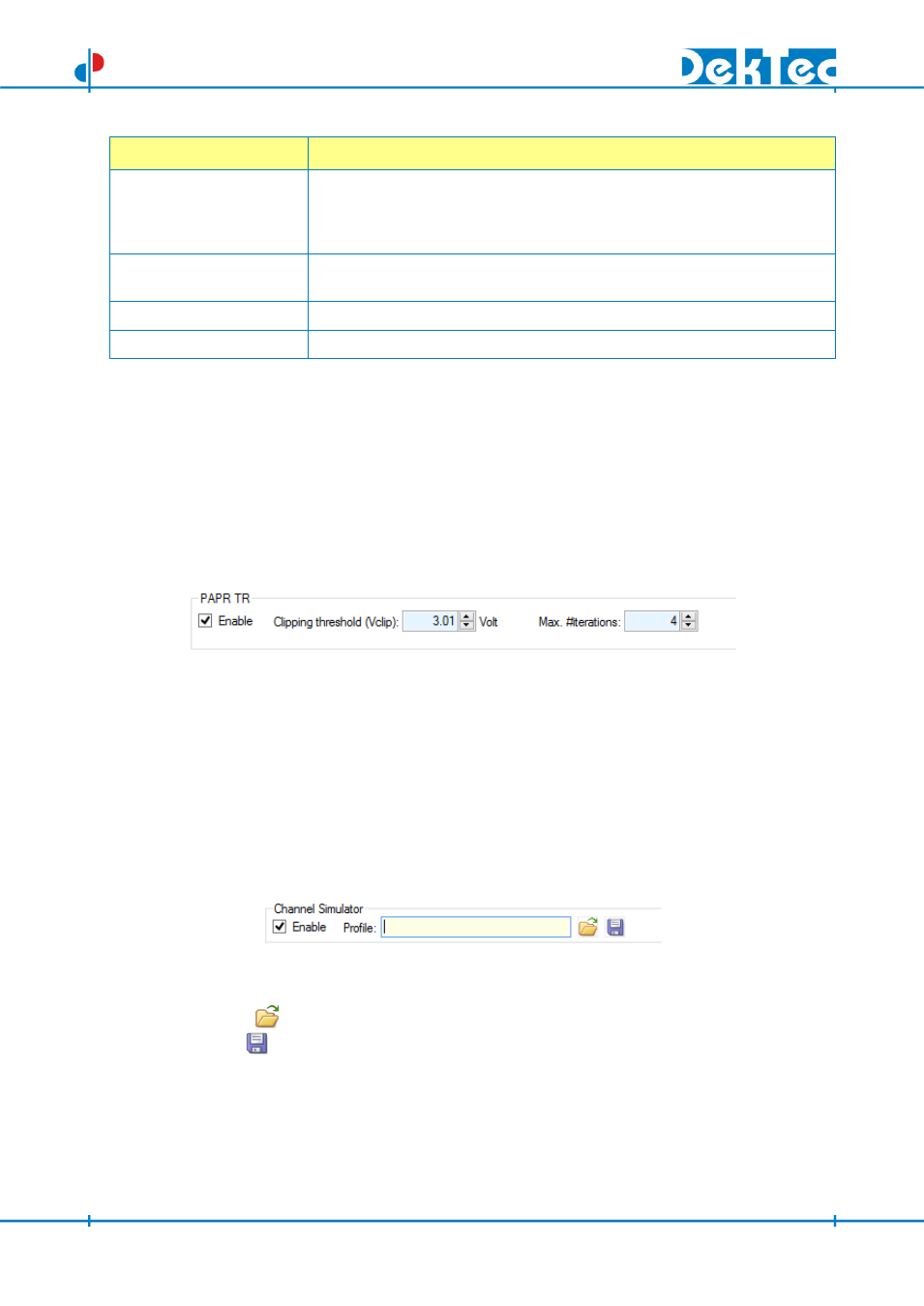Papr reduction parameters, Papr tr, Channel fading – DekTec DTC-379 C2Xpress User Manual
Page 15: Channel simulator, Dtc-379 c2xpress

© 2010 - 2015 DekTec Digital Video BV
Page 15/18
DTC-379 C2Xpress Manual
Essential Tools for Digital-TV Professionals
February 2015
DTC-379 C2Xpress
Notch parameter
Description
Notch test
If checked, allows non-spec compliant notches: broadband notches are
allowed to be inside a data slice. Moreover, notches are allowed to start dx
carriers before the modulated spectrum and to stop dx carriers after the
modulated spectrum to cancel the edge carriers.
Start
Notch band start position relative to the start frequency (DVB-C2 general
parameter) specified in multiples of the pilot carrier spacing
Width
Width of the Notch band specified in multiples of the pilot carrier spacing
Tune/Width[MHz)
This field gives an outline on the Notch band in MHz
7.8. PAPR Reduction Parameters
If PAPR is used in combination with I/Q or RF output, the PAPR-Params tab allows you to specify the
peak-to-average power ratio reduction parameters.
Note that not all PAPR-reduction parameter settings can be executed real-time.
7.8.1. PAPR TR
The PARP-TR group enables you to specify the parameters for the Tone Reservation technique. If the
Enable box is checked, the clipping threshold and the maximum number of iterations can be
specified.
7.9. Channel Fading
The channel-fading tab allows you to specify the parameters for the channel simulator:
- White noise
- Reflections (multipath echo’s)
- Doppler effects because of a moving receiver
7.9.1. Channel Simulator
The Channel-Simulator group contains the overall enable box.
If checked, channel simulation is enabled and noise and fading-path parameters can be specified. If
unchecked, no channel simulation is applied.
The File Open button
enables you to load a previously saved set of channel-simulation settings.
The File Save button
allows you to save the current settings.
